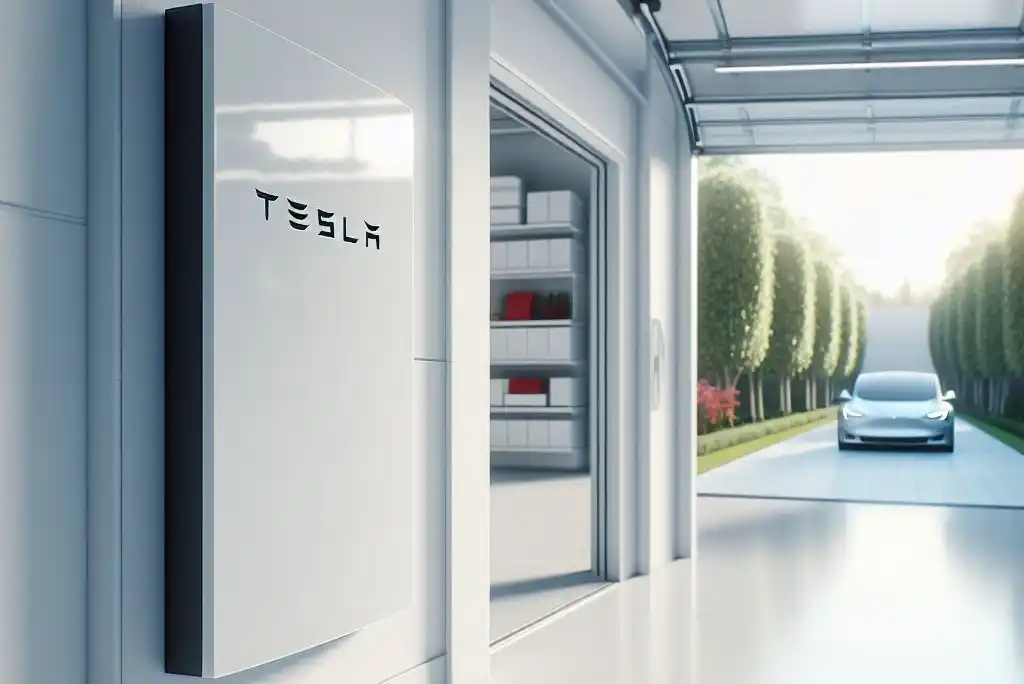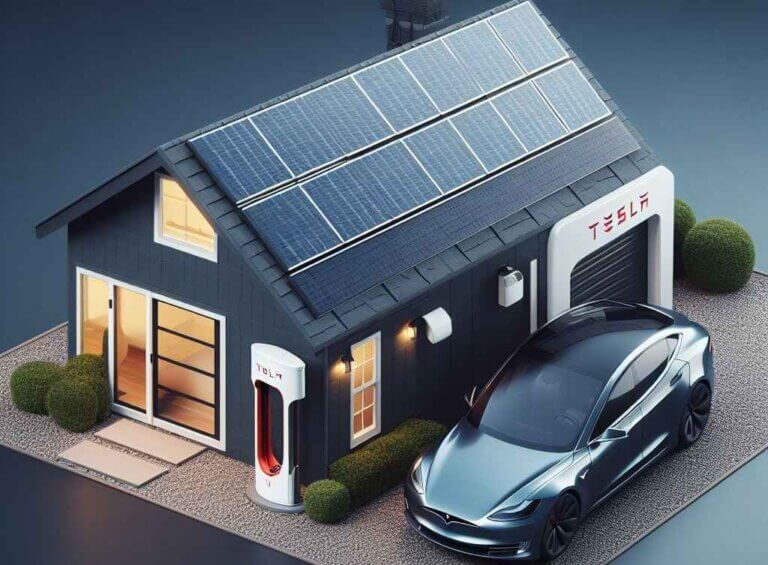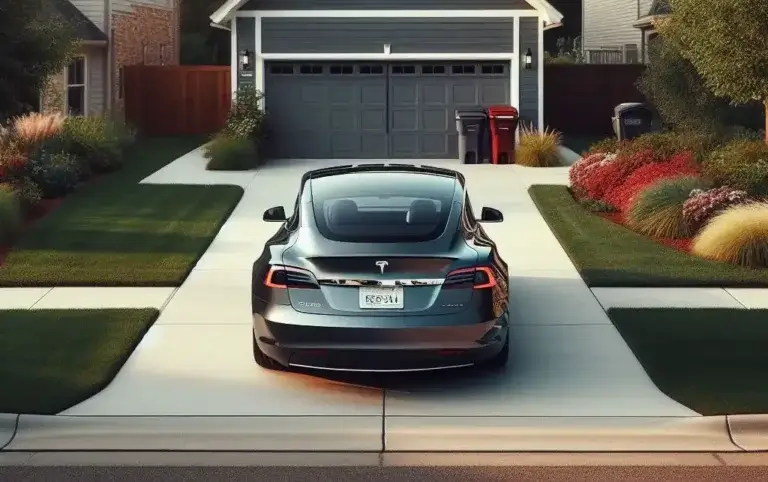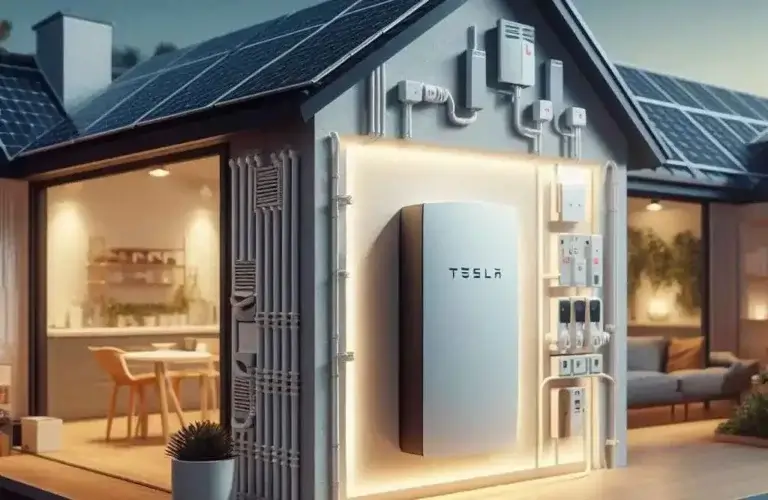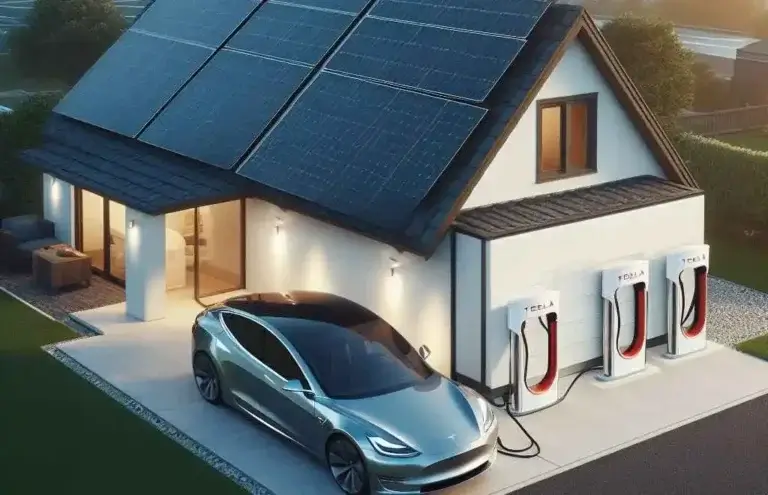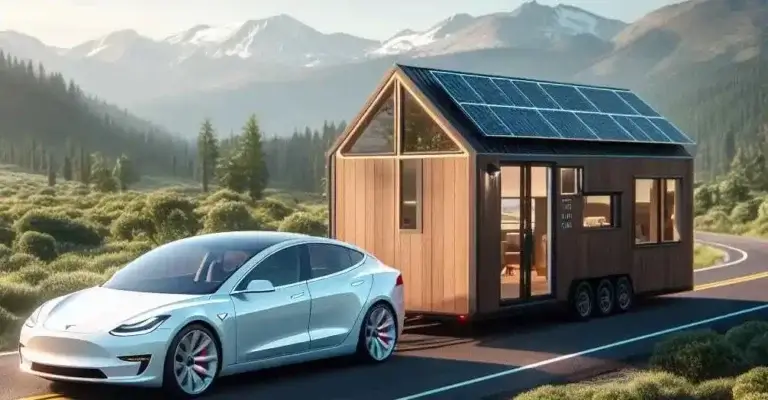Tesla Powerwall Off Grid System – Go Off-Grid with a Tesla Powerwall System
Living off the grid with renewable energy is becoming more and more viable with advanced home battery systems like the Tesla Powerwall. A Powerwall system provides solar energy storage and backup power to enable a reliable, clean home energy supply without reliance on the traditional electric grid.
In this comprehensive guide, we’ll dive into anything and everything you need to know about going Tesla Powerwall Off Grid System. This system will consist of a solar system with Tesla Powerwall 2 or Tesla Powerwall+ according to your needs.
Table of Contents
Why Go Off the Grid with a Tesla Powerwall?
There are a few key reasons why a Powerwall system is an excellent option for an off-grid, fully renewable energy home:
- Energy Independence: By generating your solar power and storing it in a Powerwall, you can disconnect from the grid and become energy independent. No more electric bills!
- Reliability: Powerwall systems provide reliable home backup power during grid outages. With solar panels charging your battery, you can have continuous access to electricity.
- Sustainability: Scaling back your reliance on fossil-fuel-powered grid electricity reduces your carbon footprint dramatically. Solar + battery is clean, renewable energy.
- Resiliency: Being disconnected from the sometimes unstable traditional grid means you don’t have to worry about power reliability issues. The sun shining on your solar panels provides consistent renewable energy.
- Cost Savings: Although Powerwall systems require an upfront investment, eliminating electric bills over the long term offers major cost savings. And there are tax credits available to offset the initial cost.
For all these reasons and more, the Tesla Powerwall enables excellent reliable off-grid living.
How Does a Tesla Powerwall Off-Grid System Work?
A Powerwall off-grid system has two key parts – solar panels and the battery unit. Here is how they work together:
During the day, your solar panels produce renewable electricity, which simultaneously powers your home and charges the Powerwall battery.
The Powerwall system monitors energy production vs usage and manages intelligent storage. When solar output exceeds household electrical demand, the excess energy gets stored in the Powerwall rather than exporting back to the grid (since you’re off-grid).
After dark when solar can’t produce energy, the fully charged Powerwall then discharges stored electricity to power your home throughout the evening.
Rinse and repeat daily, and your Tesla solar panels provide endless renewable energy thanks to intelligent Powerwall storage and discharge. With the proper solar array and battery sizing, your system provides 24/7 clean energy no matter the weather or sunlight conditions.
You can monitor your system anytime via the user-friendly Tesla mobile app for full visibility on energy production, usage, storage and more.
What Are the Powerwall Technical Specifications?
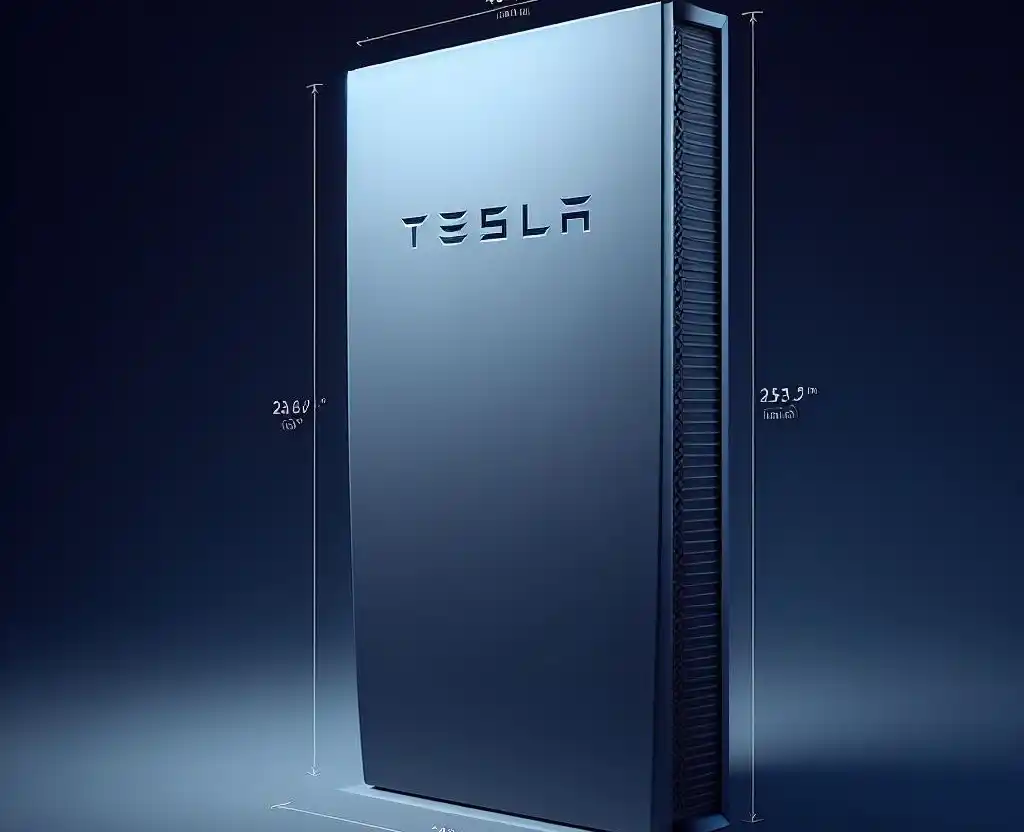
As for the battery itself, the Tesla Powerwall boasts:
- Capacity: 13.5 kWh or 7 kWh options depending on your needs
- Efficiency: 90% round-trip efficiency means minimal energy loss during charge/discharge cycles
- Depth of Discharge: 100% of capacity can safely be discharged when needed
- Warranty: 10 years to provide long-term performance assurance
- Voltage: 350 – 500 VDC
- Max Continuous Power: 5 kW
- Peak Power: 7 kW for short durations
Tesla also offers the larger Powerwall+ option with greater capacity, efficiency, voltage and power capabilities for whole home or off-grid needs.
As you size your solar array and Powerwall system for off-grid use, Tesla offers guidance on how to calculate your household electrical load, future expansion plans, weather patterns in your area, and more variables that ensure you install adequate capacity. Generally, multiple Powerwall batteries are recommended for robust off-grid systems.
What Are the Key Components in an Off-Grid Powerwall System?
While the exact solar and Powerwall equipment can vary site-by-site, most off-grid battery-based systems include:
Solar Array:
Photovoltaic (PV) solar panel systems are sized to match or exceed your electrical loads and provide charging capacity for batteries. Can include fixed ground mount or roof panels. Ensuring enough solar production capacity is key for off-grid reliability.
Powerwall Battery Unit(s):
The lithium-ion battery component stores and dispatches your solar energy. Multiple units can be chained together. Stored energy capacity is customizable for your unique loads.
Inverter:
A solar inverter or integrated gateway converts DC from solar panels to usable AC electricity for your home’s circuits. Also helps manage battery charge/discharge activity.
Off-Grid Switch:
Safely disconnects your system from the main electrical grid while maintaining household electrical distribution. Allows your Powerwall solar energy to power your home independently.
Battery Backup Gateway:
Monitors home energy usage and controls Powerwall charge/discharge activity accordingly around the clock. Ensures intelligent solar energy storage and dispatch.
Electrical Panel:
Where all system equipment connects to distribute AC power throughout your home. Carefully calibrated to match solar/battery capacities to household circuits and loads.
Tesla App:
Provides real-time visibility and control for optimal Powerwall operations and performance monitoring. App notifications can alert users of any system issues.
Professional installation, permitting, and integrated system configuration are also important for proper off-grid Powerwall system functionality. Tesla offers turnkey installation services for Powerwall customers to ensure reliability.
What Are the Best Practices for Off-Grid Powerwall System Operations?
While Tesla Powerwall systems are sophisticated, smart home energy management solutions, following some best practices helps ensure your off-grid solar battery systems continue providing maximal renewable energy reliability:
- Take advantage of the Tesla mobile app and any dashboards available through your system installer to monitor performance frequently. This allows full visibility on production vs usage trends and can notify you of any potential issues.
- Consider setting Powerwall battery reserve levels in the app to preserve some percentage of stored capacity overnight as a buffer. This avoids full overnight battery drain.
- Adjust battery charge/discharge settings to align with seasonal sun patterns or extreme weather changes that impact solar production.
- Regulate household loads to avoid peak demands that could exceed system capacities and drain batteries faster than desired.
- Check in with your installer periodically to ask questions, discuss optimization strategies, or troubleshoot any errors flagged in your system.
Continuous feedback through system monitoring and periodic adjustments keeps your Powerwall system performing optimally year-round.
What Are the Tesla Powerwall Off-Grid System Limitations?
While Powerwall systems provide exceptional off-grid home energy capabilities, a few limitations exist:
- Requires large upfront investment into solar panels and battery equipment (although offsets long-term electric costs)
- Performance reliability is impacted by environmental factors like winter solar availability and extreme weather
- Ongoing maintenance and replacements may be needed over time
- Careful load monitoring/regulation is required to avoid demand exceeding system capacity
- Permits and professional installation add complexity versus grid-connected systems
However through robust solar panel and Powerwall sizing, plus usage regulation and adjustments as needed, these constraints can typically be avoided for smooth off-grid systems operations.
What Does a Tesla Powerwall Off-Grid System Cost?
For the battery itself, current Tesla Powerwall prices are:
- Powerwall (13.5 kWh): $11,500
- Powerwall+ (21 kWh): $16,500
However, the bigger cost factor is the solar array, permitting, supporting electrical components, and professional installation. Complete off-grid solar + Powerwall system costs typically fall in the $50,000 to $100,000 range depending on:
- Household electrical loads
- Number of Powerwall units needed
- Solar array size
- Complexity (new build vs retrofit)
- Permitting requirements
- Installer pricing
While not an inexpensive endeavor, there are 25% federal solar tax credits plus additional state/local incentives available to offset costs. And eliminating electric bills over the long run provides major savings.
Tesla Energy Advisors can provide custom quotes with exact Powerwall + solar equipment recommendations and installed pricing for your unique property. Reach out directly for details.
Tesla Powerwall off-grid Cost
Here is a breakdown of the estimated costs:
- Powerwall: $9,200 – $14,200 per unit (price varies depending on location and discounts)
- Installation: $8,000 – $12,000
- Permits and inspections: $500 – $1,000
- Additional Equipment: $500 – $1,000 (e.g., inverter, transfer switch)
Total estimated cost: $18,200 – $28,200
The cost of a Tesla Powerwall for off-grid use depends on several factors, including:
- Number of Powerwalls: A single Powerwall has a usable capacity of 13.5 kWh, which may not be enough for all off-grid needs. You may need multiple Powerwalls to achieve your desired backup power.
- Location: Installation costs can vary depending on your location.
- Permits and inspections: You may need to obtain permits and inspections for your off-grid system, which can add to the cost.
- Installation complexity: Off-grid installations can be more complex than grid-tied systems, which can lead to higher installation costs.
Powerwall Off-Grid Solar FAQs
Here are answers to some frequently asked questions about taking your home off-grid with a DIY Powerwall solar and battery storage system:
Can I live 100% off the grid with a Tesla Powerwall?
Yes! With adequately sized solar panels charging Powerwall batteries to store surplus production, plus intelligent battery dispatch after dark, the system provides 24/7 renewable energy for off-grid living.
How long does a Powerwall last off-grid?
Powerwall batteries are warrantied for 10 years but can last 13+ years with reasonable cycled usage. Solar panels typically last 25-30 years. Off-grid systems may need certain component replacements over time.
Will a Powerwall work in a power outage?
Absolutely. Powerwall systems are designed precisely for using stored solar energy to power your home when the grid goes down. Just ensure the batteries have sufficient charge before the outage.
Can you use a Powerwall to charge an EV?
Yes! Any excess solar production not used by household loads can charge up a Tesla or other electric vehicle thanks to the bi-directional inverter capabilities. Intelligently power your transport with your sustainable energy.
How many Powerwalls do I need to go off-grid?
Every home’s energy demands differ. In general, installing 2-4 Powerwall batteries provides robust off-grid capacity for most well-managed households supplemented by solar. Tesla advisors can help determine your ideal system sizing.
Conclusion: Is Off-Grid Living with a Tesla Powerwall Right for You?
Deciding whether to take your home off-grid with a DIY renewable energy system is an important choice. While making this shift requires some investment and adaptation on your part, the long-term benefits of energy independence, bill savings, reliability, and sustainability can be immense.
Hopefully, this overview gives you a clear picture of how Powerwall systems enable grid defection. Reach out to Tesla Energy or certified solar installers to explore your custom options. The sun and batteries offer a path to freedom from traditional electricity infrastructure burdens – an empowering opportunity worth exploring for many homeowners.

